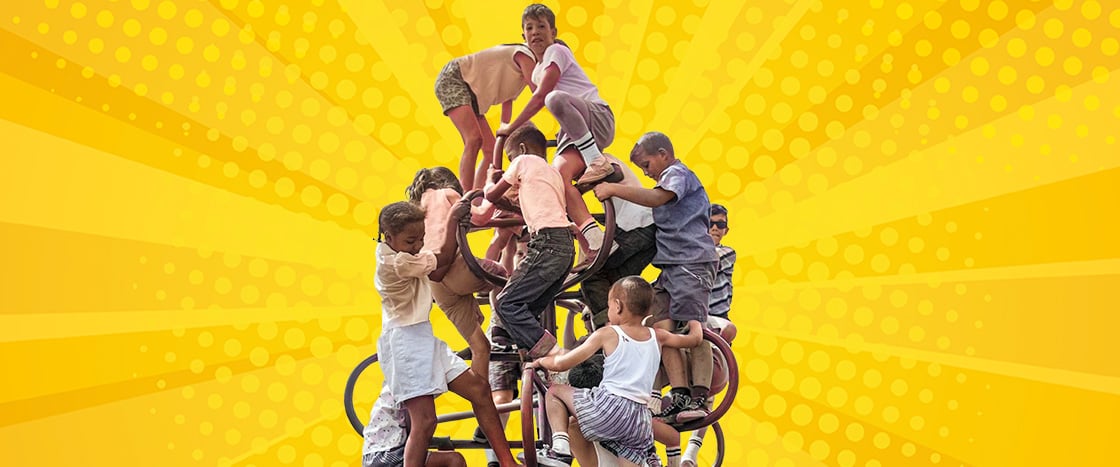Imagine you’re a kid living in Boston in 1880. It’s a hot summer afternoon, and you’ve just spent hours selling newspapers. You’re sweating in your thick, itchy clothes. Your voice is hoarse from shouting the news to passersby.
Time for a break! What should you and your friends do? You could head to an alleyway and play baseball with an old broom handle. Or you could shoot marbles on a street curb. You could even go play tag in the empty construction site around the block.
But be careful! A horse-drawn carriage could clatter around the corner at any minute. The steaming piles of garbage littering the streets could make you sick. Oh, and watch your step—there are rats EVERYWHERE.
Doesn’t sound like much fun? Well, you have nowhere else to play. That’s because playgrounds don’t exist yet. That’s right—there isn’t one playground in the entire U.S.
But that’s about to change. And when it does, childhood will never be the same.
Let’s go back in time. You’re a kid living in Boston in 1880. It’s a hot summer day. You’ve spent hours selling newspapers. Your clothes are thick and itchy, making you sweat. You’re losing your voice from shouting the news.
Time for a break! What should you and your friends do? You could play baseball in an alley with an old broom. You could shoot marbles on the street. You could even play tag in an empty lot.
But be careful! Horses pulling a carriage could speed around the corner at any minute. Smelly piles of garbage could make you sick. Oh, and watch out—there are rats EVERYWHERE.
Are you thinking this doesn’t sound like fun? Well, there’s nowhere else to play. That’s because playgrounds don’t exist yet. That’s right—there isn’t one playground in the entire U.S.
But that’s about to change. And when it does, being a kid will change forever.

